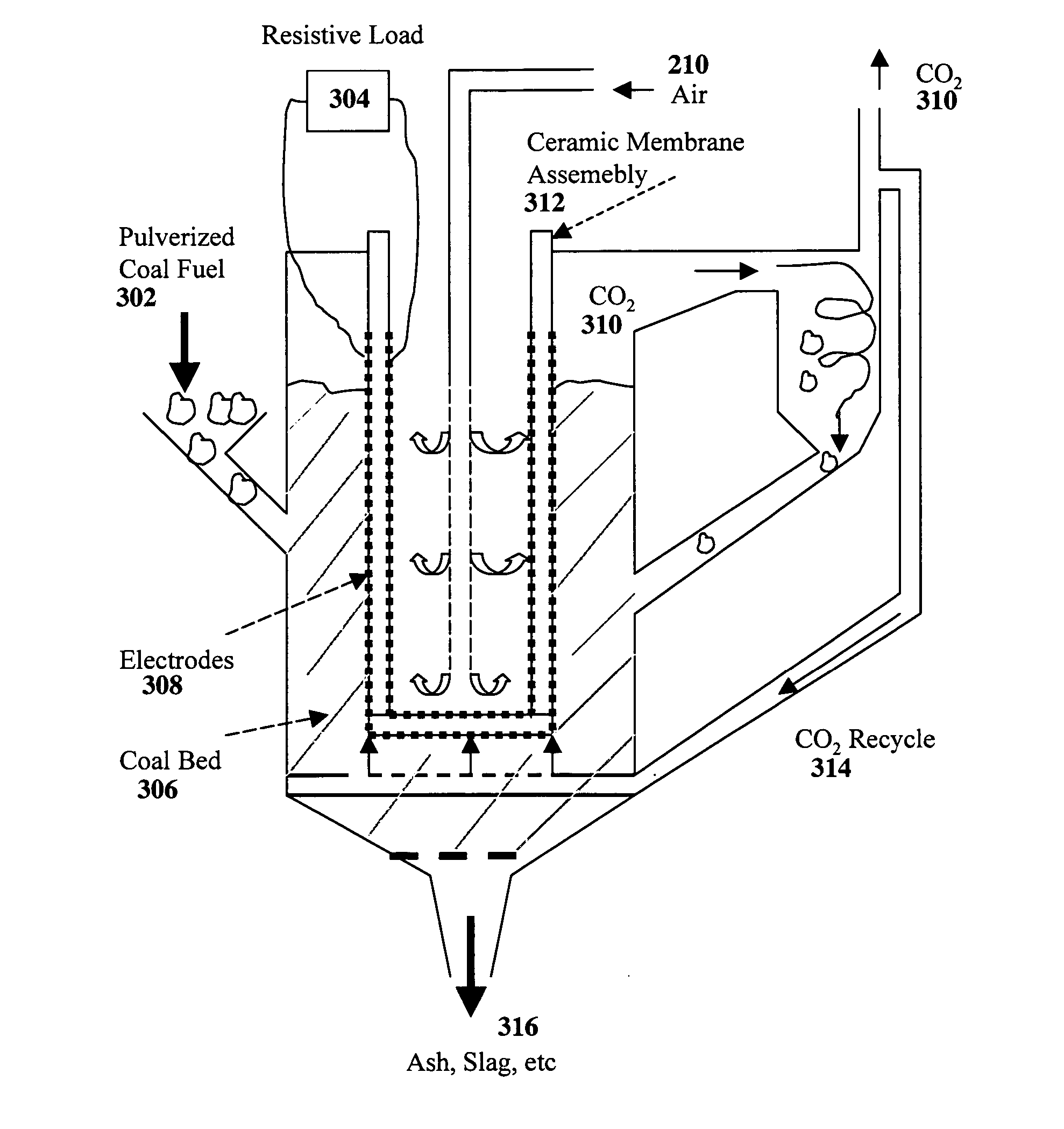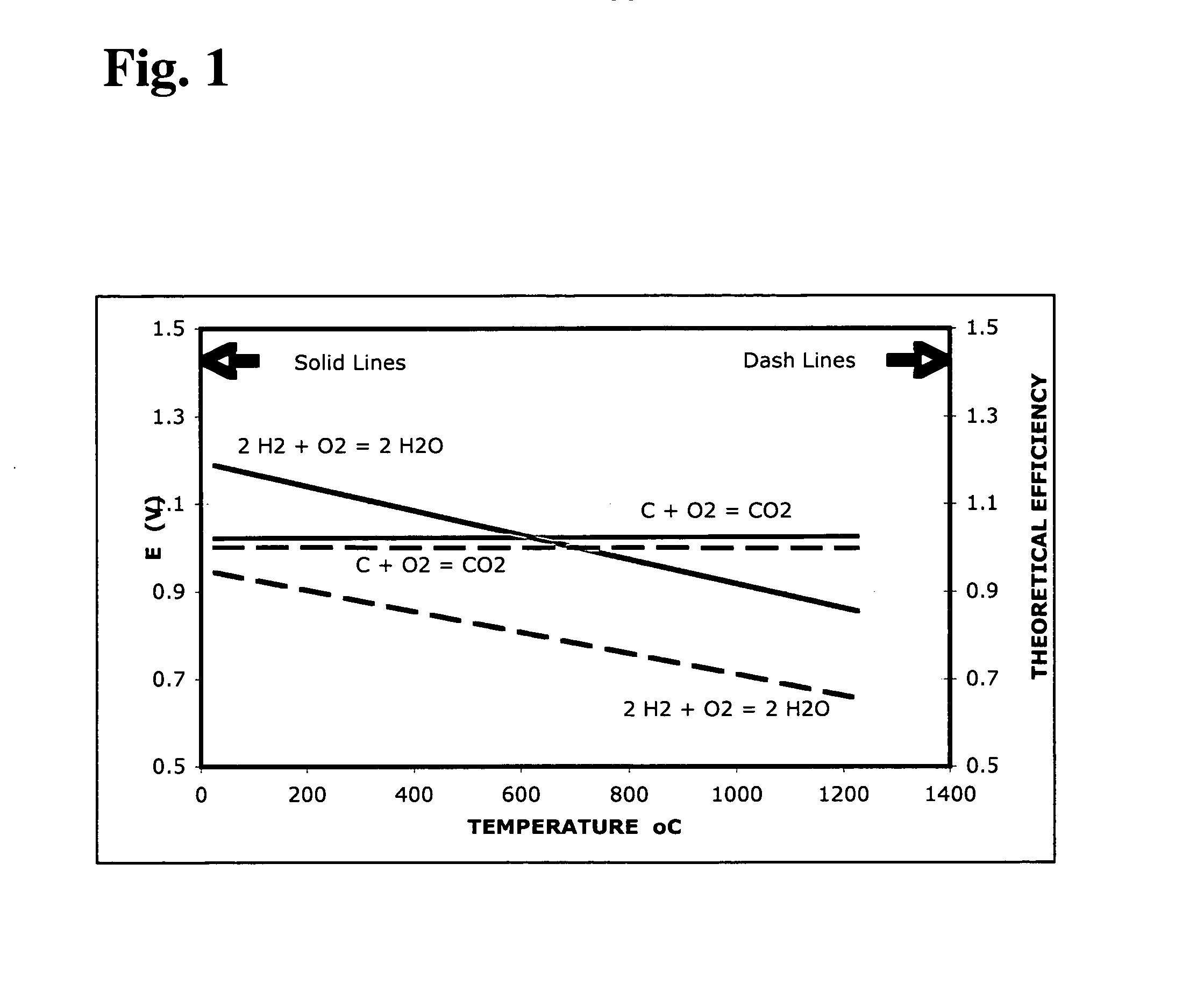High temperature direct coal fuel cell
a fuel cell and high temperature technology, applied in the field of high temperature fuel cells, can solve the problems of low conversion efficiency, limited capacity of other energy sources such as wind, solar energy, geothermal energy, nuclear energy, etc., and achieve the effect of increasing the cost of cosub, and increasing the cost of co-sub
- Summary
- Abstract
- Description
- Claims
- Application Information
AI Technical Summary
Problems solved by technology
Method used
Image
Examples
Embodiment Construction
[0031] The electrochemical conversion of coal into electricity involves a high temperature fuel cell that features an oxide ion selective solid electrolyte that supplies the oxygen required for the electrochemical oxidation of carbon. Pulverized coal is introduced into the anode compartment of the cell with or without other solid constituents, such as sequestering agents for capturing the CO2 and SO2 produced.
[0032]FIG. 1 shows the theoretical conversion efficiency and the expected open circuit voltage as a function of temperature for the electrochemical oxidation reaction of carbon. Note the temperature independence of E and efficiency for the carbon oxidation reaction, while the behavior is strongly dependent on temperature for the case of hydrogen.
[0033] Referring to Eq. (1), the open circuit voltage of the fuel cell is determined by the carbon-oxygen equilibrium at the anode, since the oxygen activity on the cathode side is fixed by air. FIG. 1 shows the theoretical conversion...
PUM
| Property | Measurement | Unit |
|---|---|---|
| operating temperature | aaaaa | aaaaa |
| operating temperature | aaaaa | aaaaa |
| operating temperature | aaaaa | aaaaa |
Abstract
Description
Claims
Application Information
 Login to View More
Login to View More - R&D
- Intellectual Property
- Life Sciences
- Materials
- Tech Scout
- Unparalleled Data Quality
- Higher Quality Content
- 60% Fewer Hallucinations
Browse by: Latest US Patents, China's latest patents, Technical Efficacy Thesaurus, Application Domain, Technology Topic, Popular Technical Reports.
© 2025 PatSnap. All rights reserved.Legal|Privacy policy|Modern Slavery Act Transparency Statement|Sitemap|About US| Contact US: help@patsnap.com



